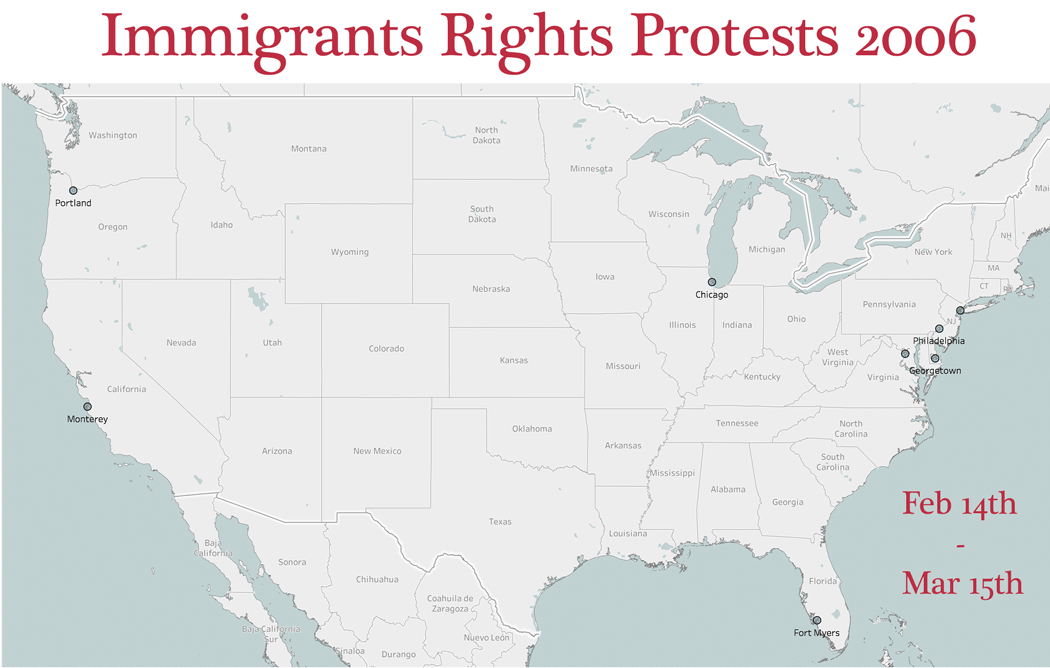
As we move closer to the elections, we hear more and more racist rhetoric against immigrants, particularly coming from right-wing Republican figures like Donald Trump. He has referred to immigrants as “not human” and “animals” who are “poisoning the blood of our country.” This dehumanizing language is harmful to immigrants by encouraging violence towards them. It is also harmful to all of us, native-born workers or immigrant workers, by dividing us against each other. At the same time, while careful to not display such open bigotry, Joe Biden and much of the Democratic Party have adopted one of the most anti-migrant policies, further militarizing the border.
Demagogues and racists like these politicians try to sell the lie that immigrants are somehow responsible for the problems of this society – the lack of good paying jobs, the violence in the streets and more, when it is them and the system that they defend that is at the root.
At a time like this, it is essential that we learn lessons from the past. Immigrant workers are far from powerless in standing up to attacks like these. In fact, migrant workers have been in the forefront of many important struggles, recently and further in the past. One important struggle was the “Day Without Immigrant Workers” on May 1st, 2006.
At the end of 2005, a proposal was put forward in Congress called HR 4437, also known as the Sensenbrenner bill, named after the representative from Wisconsin who sponsored it. It would have done many things such as build a wall along the U.S.-Mexico border, make it a felony to be an undocumented immigrant, make it easier for federal officials to detain people, force employers to verify their employees’ citizenship status, criminalize anyone who “aids and abets” undocumented immigrants, and more. This anti-immigrant rhetoric was also tied to the hysteria around the so-called “war on terror” of that time period, painting immigrant communities as hotbeds of potential terrorist activity. HR 4437 was ultimately passed in the House of Representatives in December of 2005 and moved to the Senate for approval.
As HR 4437 and other similar policy proposals were being debated in Congress, the immigrant population was not going to be bullied into further marginalization. People began to organize. In 2005, small groups of activists challenged and confronted vigilante groups along the border, like The Minutemen. In the Winter and Spring of 2006 on an almost daily basis, immigrants demonstrated throughout the country, from hundreds in Fresno, California to half a million in Dallas, Texas. Young people, particularly high school students, played a critical role in sparking many of the protests during this time, often through their school walkouts. On March 26, an estimated 1.25 million people marched in Los Angeles in what was called, “La Gran Marcha” (“The Great March”).
As things began to heat up, what initially began as grassroots mobilizations in cities across the country, unions, religious organizations, immigrant legal organizations and personalities in Spanish- speaking radio and television joined in broadcasting the call to oppose the attacks. As more and more people got activated, the perspective of those in the streets demonstrating also started to change. People demanded a rejection of HR 4437, but also began to demand much more, including a path to citizenship for all undocumented people.
The movement climaxed on May 1st, and it was not an accident that this particular date was chosen. May 1st is International Workers Day, which is a historic day of struggle for workers around the world. The day was nicknamed, “A Day Without Immigrants,” to demonstrate the economic contributions of the immigrant population to the United States. The call was for a total boycott of all economic activity, whether going to work, or buying or selling anything.
In one of the largest protests ever in U.S. history, an estimated 2-3 million people took part in demonstrations across 200 cities. Not only were city blocks jammed up with people, entire industries were effectively shut down across the United States.
The ports of Los Angeles and Long Beach – major chokepoints for international commerce – had an estimated 90 percent of shipping shut down. Major food processing companies like Cargill Meat Solutions were forced to shut down their operations. Cargill closed five of its beef plants and two of its hog plants because they simply didn’t have staffing to run their operations. In regions everywhere, agriculture, construction, and food service were shut down.
Coming out of the mass demonstrations and strikes, HR 4437 was ultimately rejected by the Senate. The worst of the attacks were beaten back, not at the ballot box, but by millions of people, many of whom couldn’t legally vote, even if they wanted to. While the movement that culminated on May Day 2006 did not prevent the broader attacks against immigrants that we have seen escalate until today, it did put the politicians and the government on notice. The demonstrations of the immigrant rights movement gave a glimpse of what is possible when the sleeping giant begins to wake up.





